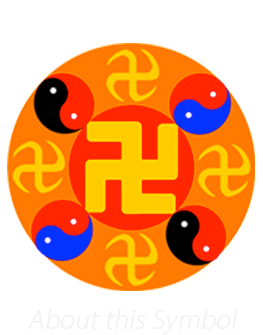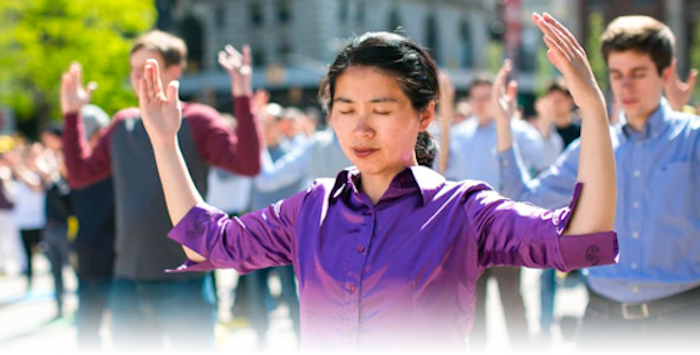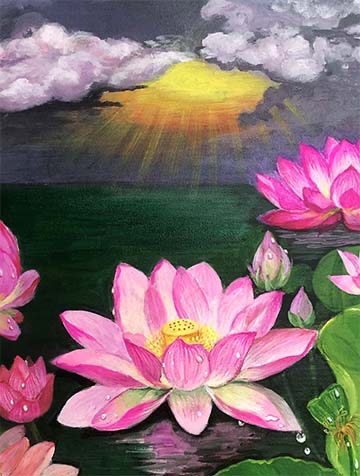(Minghui.org) Annual events commemorating the peaceful protest that occurred in China on April 25, 1999, are held in countries around the world. Falun Dafa practitioners tell people what happened on April 25. I would like to discuss the banners we use in parades and how we can use them to convey our messages more effectively.
Each parade has a theme. For instance, Christmas parades celebrate the birth of Jesus, while St. Patrick’s Day parades honor the arrival of Christianity in Ireland. The message conveyed by a parade is simple and clear, not a jumble of topics that the spectators need to decipher.
The parade participants’ banners, flags, and costumes should convey the same message, which should be intuitive, simple, and straightforward. They repeat the same theme, so that even if people walk by and only glance at the parade, they know what it is about. This also makes it easier for the media outlets to capture photos and convey the messages to their readers.
With this understanding in mind, it should be easy for us to put together a Falun Dafa parade. Besides “Falun Dafa” and “Truthfulness-Compassion-Forbearance” in both Chinese and English, which are all-purpose, we need banners for different topics. If we are commemorating April 25, we add banners highlighting the peaceful appeal. If we are celebrating May 13, we have music, dances, balloons, and exercise demonstrations. And we have banners that say “Celebrate World Falun Dafa Day,” “The World Needs Zhen-Shan-Ren,” and others that stress the health benefits and the global spread of the practice. For July 20 events, we bring out banners that expose and call for the end of the persecution.
However, this does not seem to be the case in New York City (NYC). Almost every parade we hold features banners highlighting multiple topics. For the past 25 years, we have held numerous parades every year in NYC. Local residents have seen the parades many times, yet they still ask, “So what is Falun Dafa?”
Specifically, this year we have banners related to April 25 in our parade, which is good. The banners include “4/25 Peaceful Protest,” “10,000 People Appeal Peacefully,” and “Falun Dafa Zhen-Shan-Ren.” The different banners allow people to understand why April 25 is so important. They highlight the peaceful protest and debunk the CCP’s false narrative of the gathering being a siege of Zhongnanhai (a government compound in Beijing). They point out the moral standards of the participants and connect Falun Dafa to Zhen-Shan-Ren.
Some banners, however, do not relate to the theme of the parade and are unnecessary. The banner that says “Falun Dafa Is Good” may not sit right with those who are deceived by the CCP propaganda. A “Truthfulness-Compassion-Forbearance Is Good” banner will make a much better impression on the spectators, as the idea is intuitive and straightforward.
Other banners included “Thank You, Master,” which is not directly connected to April 25; “Dafa Is Practiced in 100 Countries,” which fits better with May 13; and banners to “End the Persecution,” which are appropriate for the July 20 parades.
There were also banners calling for an end to the CCP. Dafa practitioners are not going to end the CCP; that task belongs to the gods, because the Party is against the divine and against Zhen-Shan-Ren. Practitioners have no enemies. We are here to stop the persecution.
We understand that practitioners spend their hard-earned money to make these banners and want to use them as frequently as possible. However, sometimes, not all of the banners are appropriate or necessary. There are even banners that promote Dafa projects, which distract the spectators and interfere with the overall effect of the parade.
We must have the wish to save people, but what we do has to lead to solid results, especially with limited resources and time left.
I have not seen this topic shared before. I kindly remind practitioners to pay attention to this issue, and I hope there will be more discussions about it.
On a side note, I read about practitioners holding a candlelight vigil in Manhattan to “mourn April 25.” The term “mourn” is inappropriate and misleading and may confuse onlookers, because April 25 was a peaceful protest that concluded without violence or death.
If practitioners wish to expose the persecution and mourn those who died because of it, we should refrain from using banners related to April 25. When we hold public activities to clarify the truth, we must remember that our goal is to help people understand the truth, rather than doing what we prefer.
Articles in which cultivators share their understandings typically reflect an individual's perception at a point in time based on their cultivation state, and they are offered in the spirit of enabling mutual elevation.
Copyright © 1999-2025 Minghui.org. All rights reserved.
Category: Cultivation Insights








